PENGUIN  CLASSICS
CLASSICS
THE BOOK OF CHUANG TZU
MARTIN PALMER is Director of the International Consultancy on Religion, Education and Culture (ICOREC). A student of Chinese for over twenty years, he has translated many Chinese classics and folk religion texts, as well as having commented upon the major religious traditions of China in print and also on radio and television. As Director of ICOREC he works as a religious adviser to the World Wide Fund for Nature (WWF) around the world, directing religion-based environmental programmes. Currently he is working with the China Taoist Association on a project to protect the main Taoist Sacred Mountains of China.
ELIZABETH BREUILLY is a member of ICOREC. She specializes in educational books and in assisting faith groups in articulating their fundamental teachings clearly to non-specialist audiences.
CHANG WEI MING, a practising lawyer, was Martin Palmers first teacher of Chinese. Her interest in Chinese philosophy has been an abiding passion for many years.
JAY RAMSAY has collaborated with Martin Palmer on a number of translations of Chinese texts, bringing his gifts as a poet to bear upon the translations. He is the founder of the Chrysalis poetry project.
The Book of Chuang Tzu
Translated by MARTIN PALMER
With ELIZABETH BREUILLY, CHANG WAI MING and JAY RAMSAY
PENGUIN BOOKS
PENGUIN BOOKS
Published by the Penguin Group
Penguin Books Ltd, 80 Strand, London WC2R 0RL, England
Penguin Group (USA) Inc., 375 Hudson Street, New York, New York 10014, USA
Penguin Group (Canada), 90 Eglinton Avenue East, Suite 700, Toronto, Ontario, Canada M4P 2Y3
(a division of Pearson Penguin Canada Inc.)
Penguin Ireland, 25 St Stephens Green, Dublin 2, Ireland (a division of Penguin Books Ltd)
Penguin Group (Australia), 250 Camberwell Road, Camberwell,
Victoria 3124, Australia (a division of Pearson Australia Group Pty Ltd)
Penguin Books India Pvt Ltd, 11 Community Centre,
Panchsheel Park, New Delhi 110 017, India
Penguin Group (NZ), 67 Apollo Drive, Mairangi Bay, Auckland 1310, New Zealand
(a division of Pearson New Zealand Ltd)
Penguin Books (South Africa) (Pty) Ltd, 24 Sturdee Avenue,
Rosebank, Johannesburg 2196, South Africa
Penguin Books Ltd, Registered Offices: 80 Strand, London WC2R 0RL, England
www.penguin.com
First published by Arkana 1996
Published in Penguin Books 2006
3
Copyright ICOREC, 1996
Illustrations copyright Circa Photo Library, 1996
All rights reserved
The moral right of the translators has been asserted
Except in the United States of America, this book is sold subject
to the condition that it shall not, by way of trade or otherwise, be lent,
re-sold, hired out, or otherwise circulated without the publishers
prior consent in any form of binding or cover other than that in
which it is published and without a similar condition including this
condition being imposed on the subsequent purchaser
For Vicky with all my heart
Contents
Preface
Translating an author as rich, diverse and as intense as Chuang Tzu is an immense undertaking. There are few full translations of Chuang Tzu, so I felt that there was space for another, especially one aimed at a more popular market. For this reason, there are one or two ways in which this translation differs from others.
Firstly, I have adopted a simplified form of romanization of Chinese names. There are two commonly used systems: Wade-Giles and Pinyin. The differences can be seen in the way they spell the capital of China: Peking (Wade-Giles) or Beijing (Pinyin). In many instances, Pinyin gives a more accurate phoneticization of the Chinese as in Beijing. But in Pinyin, Chuang Tzu becomes Zhuang Zi which is not as close to the original as the Wade-Giles. In using Wade-Giles, I have opted for a more familiar system for the average reader. However, to help the flow of reading, I have dropped the diacritical marks, and capitalized all parts of the name. Thus, in , the minister, Chu Po-yu, becomes Chu Po Yu. I hope purists will forgive me this in the interests of greater ease for readers.
Secondly, I have dropped some of the more obscure names which are given and only make a great deal of sense if one is able to see the puns in Chinese. For example, the last paragraph of in the Chinese contains detailed names for every bug and insect. I have dropped all but the most necessary because they get very confusing!
Thirdly, in the first seven chapters, we have marked out the text to show that it does not flow sequentially. The first seven chapters in particular contain self-contained stories and discussions. Trying to read Chuang Tzu sequentially is a mistake. The text is a collection, not a developing argument. In the first seven chapters, we have indicated this with clear breaks.
Approaching a text as ancient and as fascinating as Chuang Tzu, any translator needs all the help possible! Having translated a number of ancient Chinese texts in the last few years (The Tao Te Ching, the I Ching) I feel relatively at home in the linguistic and cultural world of China between the sixth and third centuries BC. But I was delighted to have three guides who either in part or in whole had made the journey into the Chuang Tzu and lived to tell the tale. In confirming or debating my own translations, I turned to these three other translators for inspiration or for argument. The three translators are, first and foremost, the excellent translator of the first seven chapters, Fung Yu-Lan, professor of Chinese in the USA and China during most of this century. His excellent translation A Taoist Classic Chuang-Tzu is published by the Foreign Languages Press, Beijing, from an original edition first published in 1931. It is masterful.
The second translator, who has translated the whole text, is Burton Watson of the Columbia University translation program. His The Complete Works of Chuang Tzu, published by Columbia University Press in 1968 and still in print, is a joy to read. Clear and informative, it provides the most readable translation I have come across. I owe a great debt to Burton Watson, even if at times I differ from some of his usage and interpretations.
Finally, that master of translation not necessarily for the ease of his translation but for the depth of his work James Legge. Produced in the 1880s, his The Writings of Kwang Tze is a rich resource for any translator. It is to be found in volumes 39 and 40 of Sacred Books of the East, edited by Max Muller, Oxford University Press, 1891.
Apart from these books, I owe an immense debt of gratitude to colleagues. The Taoist scholars at the White Cloud Temple in Beijing, home of the China Taoist Association, taught me a great deal about how to read Chuang Tzu. To my old friend and first mentor in Chinese, Chang Wai Ming, I owe more than I can say. Over twenty years ago she taught me to love and enjoy the Chinese language and culture and I have never looked back. Her intensity of love for her own culture and language is truly infectious.
Jay Ramsay cannot read a word of Chinese thank goodness! He thus makes a perfect sparring partner. As a poet he has a sense for English which challenges and thrills me as a writer. As someone who has entered into the Chinese world through the translations we have done together, he has a sense of Chinese symbolism and literature which is quite extraordinary. I owe him a great deal for making the most of my turns of phrase.
Elizabeth Breuilly is really the main other translator. Like Jay she knows no Chinese but she has a rigorous and vigorous understanding of English. She took sheets of barely legible scrawl sent back from all round the world I translate as I travel and turned it into readable English. She has given untold hours to this, as has Jo Edwards, who put most of it on disk. I cannot say how grateful I am to both of them for their work and for enjoying the old rogue Chuang Tzu as much as I have.
Next page

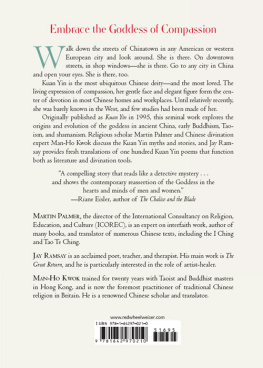
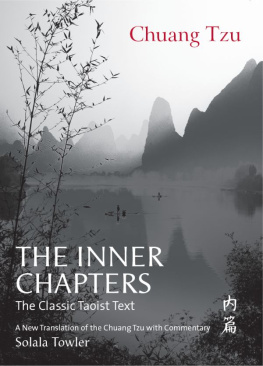
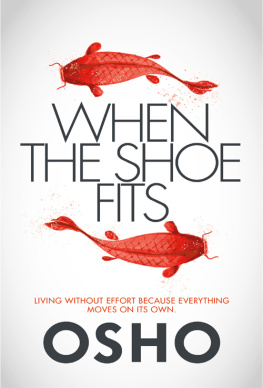
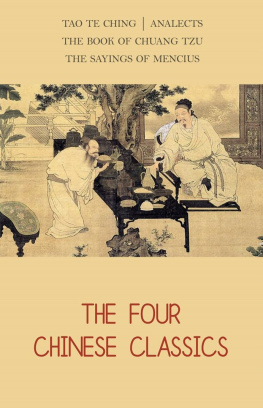
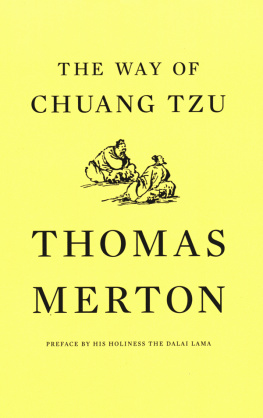
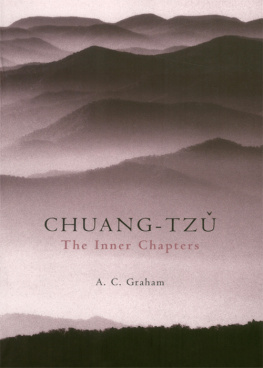
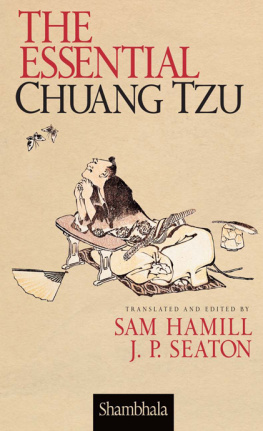

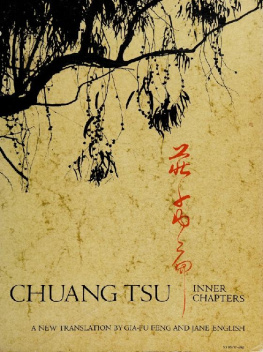
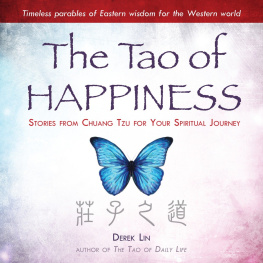
 CLASSICS
CLASSICS